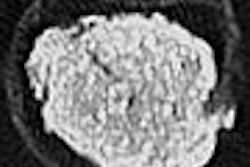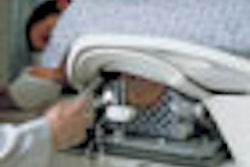The best predictor of a good recovery after an ischemic stroke is how successfully the patient can be revascularized, according to the results of a multicenter trial that looked at the correlation between restoration of blood flow and outcomes. Neurointerventionalist Dr. Christopher Zylak offered his take on the Multi Mechanical Embolus Removal in Cerebral Ischemia (MERCI) trial at the 2008 International Symposium on Endovascular Therapy (ISET) meeting in Hollywood, FL.
The prospective trial had 164 patients treated at 15 hospitals in the U.S. and Canada. All patients had moderate-to-severe, large vessel strokes and many were ineligible for, or had failed treatment with, tissue plasminogen activator (tPA). Treatment with the Merci Retrieval System was initiated within eight hours of stroke symptom onset, which is beyond the three-hour treatment window for intravenous tPA.
The Merci device sits at the end of a catheter. A corkscrew type wire is pushed through the clot and then the catheter is withdrawn, pulling the clot with it, Zylak explained. The system is manufactured by Mountain View, CA-based Concentric Medical, which sponsored the trial.
According to the results of Multi MERCI and its precursor, MERCI Part I, the risk of death was decreased by 67% if the clot could be retrieved and the artery was opened, noted Zylak. Good clinical outcomes occurred in 39% of patients with recanalization and 3% of patients without recanalization. Ninety-day mortality was 30% in the recanalized group and 73% in the nonrecanalized group (Stroke, April 2007, Vol. 38:4, pp. 1274-1280).
While the results were positive, Zylak noted that the Merci device is not without its flaws. One problem is that the device can fracture, usually because of a kink developing in the catheter, he said. To prevent this, Zylak noted that the microcatheter tip should be maintained directly proximal to the device loops. Too much space can allow inappropriate loops to form.
"After you open the vessel, your job is not over," Zylak said. The next step is to save the penumbra by decreasing metabolic demand in the hours after the procedure. Ensuring that the patients are in normothermia and euglycemia is key. In addition, the patient should be properly hydrated and the blood pressure should be managed.
With regard to euglycemia, hyperglycemia occurs in about 20% of stroke patients, and a hyperglycemic stroke patient has 12 times the risk of developing hemorrhage, Zylak stated. It also worsens peri-infarct edema and appears to be worse in nondiabetics.
Hypoglycemia can lead to brain toxicity and rapid neuronal damage. Irregularities in blood sugar levels may even cause focal neurologic signs that mimic stroke. Finger-stick tests to check glycemic levels every four hours may not be enough to prevent adverse changes. The tests should be done every hour, even in nondiabetics, he said.
Finally, clinicians should also watch for fever, which worsens metabolic demand, increases free radical generation, increases glutamate and glycine levels, and can even nullify thrombolytic recanalization, Zylak noted, adding that for every degree of fever over 99.5&176; F, the risk of a poor outcome increases more than twofold.
Zylak stressed that even a successful treatment method such as the Merci system is no panacea. Stroke treatment requires a team approach to get the best outcomes for the patient.
By Edward Susman
AuntMinnie.com contributing writer
February 20, 2008
Related Reading
New indicators predict outcomes of tPA treatment for stroke, August 14, 2007
Diffusion-weighted MRI: The cornerstone of neuroimaging-based stroke studies, June 14, 2007
Mechanical clot removal can often improve stroke outcomes, February 13, 2007
Copyright © 2008 AuntMinnie.com



















